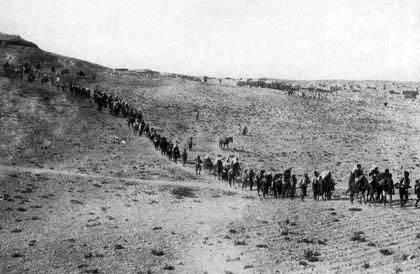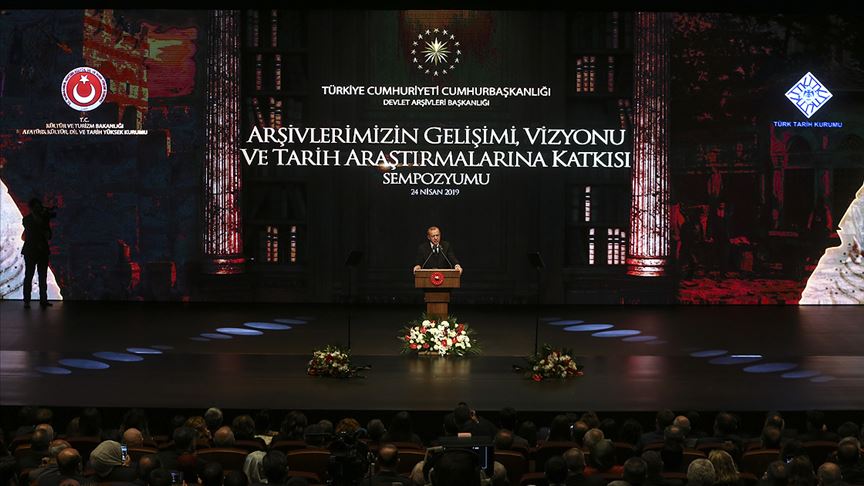It started to snow as we were driving from Yerevan to Alakyaz, a Yazidi inhabited village in Aparan region, some 65 km from the Armenian capital. The region is situated at a high plateau over 1800 meters from sea level, making the weather here harsh even in spring season. Road conditions are very bad once you go out of the main highway, as if no work was done on them since the collapse of the Soviet Union.When I asked Jasem Mahmudyan whether he had been to Iraq to visit the Yazidi holly sites in Lalesh, he answered in negative. The tragic events in Sinjar had shaken the entire Yazidi community, and some families had found temporary refuge in Armenia, but they had eventually continued to European destinations. From the village of Alakyaz, Iraq seemed very far away indeed.
I went to visit Yazidi villages with many questions in mind: what did the biggest ethno-religious minority think about the changes in Armenia? Did it change anything in their daily lives? And how did the violent events in the Middle East, the genocide against Yazidis in Iraq, influence them, and the age-old debate about their identity as Yazidi-or-Kurd?
Yazidis are the major ethno-religious minority in Armenia. According to the 2011 census, 35’272 Yazidis lived in Armenia. They were much more numerous in the last Soviet census in 1989, which counted 52’700 Yazidis inhabiting Armenia. But the harsh conditions after the Soviet collapse – the 1988 earthquake, the economic collapse, the war with Azerbaijan, and the on-going Turkish blockade - forced many to migrate. There are 22 Yazidi communities in Armenia, in Aparan, Talin and Armavir regions.
Jasem Mahmudyan, the head of the Alakyaz commune, tells me that a third of the inhabitants of the commune – which is composed of 11 villages – have departed in the difficult years of the 1990’s. They moved mostly to Krasnodar, in Russian North Caucasus. “The village of Neberzhay in Krasnodar now is composed of migrants from our village. We call it Nor Alakyaz”, he concludes. Others left for Chelyabinsk in Siberia.
There is a boom in construction of Yazidi temples throughout Armenia. The most important among them is the Aknalich temple – “the worlds largest Yazidi temple.” It is financed by Mirza Sloian, a Yazidi businessman originally from Armenian and residing in Moscow. Yet, for Boris Muraz, a journalist and chief-editor of an on-line journal, “there is no spiritual life in those structures. They [Yazidis] lack community life, it is the result of the absence of schools and spiritual life,” he says. “Community life is limited to marriages and funerals.” He does not consider this lack the responsibility of the Armenian state, but criticizes rich Yazidi businessmen who do not make contribution for the development of their community. He compares it with Diaspora Armenians, who not only finance schools, newspapers, and Armenian culture of their communities, but also provide humanitarian aid and funding for development projects in Armenia itself.
The impoverishment of Yazidi cultural life in Armenia is surprising; in the past, Soviet Armenia was a centre of Yazidi-Kurdish culture. When practicing Kurmaji language was strictly censored in Turkey, Radio Yerevan had Kurdish radio programmes, Yerevan State University had research programmes on Kurdish language and history, and many books and newspapers were published in Kurdish. The collapse of the Soviet Union, and the out-migration of Yazidi and Kurd intellectuals, explains the current impoverishment. Boris Muraz says that Yazidis need religious reformation, just like Sheikh Adi (ibn Musafir al-Umawi) did in the 12th century. Otherwise, “this is a dying community,” he warns.
The events in Iraq, and the fact that Peshmerga forces abandoned Sinjar in the face of ISIS attack leaving the Yazidi population to the mercy of the jihadis, has revived once again the age old debate: are Yazidis Kurds but with a different religion, or are they a different ethnicity? In Soviet times, the official papers identified them as Yazidis. In Alakyaz, people that I interrogated answered that although they had their particular religion, they nevertheless made part of the Kurdish ethnos. Didn’t they all talk the same, Kurmanji language? Few kilometers away I visited Nasryan family in Jamishlu village. There, the eldest son told me that he is the schoolteacher, instructing math and Yazidi language. When I queried whether Yazidi language was not the same as Kurdish, he answered: “I teach Yazidi language, we are not Kurdish, we are Yazidis.”
This age-old debate on identity is sapping the energies of the community, according to Rustam Mahmudyan, a former member of the parliament, and the son of Jasem Mahmudyan. Today, the identity debate takes three forms, according to him: Those who say “we are Yazidis”; those who say “we are Kurds”, and those who say “we are Yazidi Kurds”. “Yazidism exists, but it should not be deployed against the Kurds”, he added.
Thanks to the efforts of Rustam Mahmudyan, and other members of the Yazidi community, the Armenian parliament adopted a resolution on January 16, 2018, recognizing the 2014 events of Sinjar as “Genocide”. “I consider the Yazidi Genocide the result of the lack of international recognition of the Armenian Genocide. If the 1915 Genocide had been recognized, the international community would have put in place mechanism to prevent future genocides. It would have stopped the Genocide of the Yazidis,” according to Rustam Mahmudyan.
When I asked Jasem Mahmudyan whether he had been to Iraq to visit the Yazidi holly sites in Lalesh, he answered in negative. The tragic events in Sinjar had shaken the entire Yazidi community, and some families had found temporary refuge in Armenia, but they had eventually continued to European destinations. From the village of Alakyaz, Iraq seemed very far away indeed.
Boris Muraz remarks that no single Yazidi volunteer from Armenia went to Iraq in the aftermath of the Sinjar events in 2014, but adds that during the April 2016 war (following Azerbaijani attack on Karabakh front) - there were large number of Yazidi youth who volunteered to join the Armenian armed forces.
The events of 2018 in Armenia in– the Velvet Revolution – also sound already far away. “The economic situation is very complex”, says one of the villagers taking part in the conversation, and complains of rise in basic consumer prices. Yet, the out-migration of the 1990’s seems to have stopped. Most of the families I talked to say that their ancestors migrated from the Kars region during World War I, now in Turkey. “We feel very well in Armenia,” Jasem Mahmudyan said. Like all Yazidis he is very proud of the unique culture of his people: “We have preserved our old, pagan religion; the roots of our people are very deep.”
When I ask about discrimination that Yazidis might face in Armenia, Boris Muraz answers saying: “There is discrimination at school, where courses on Armenian church is obligatory to all.” He considers that it would be correct to give a choice on religious courses to students, including that of Yazidi religion.
What has changed in Armenia from the experience of Yazidis? “Nothing” answers Rustam Mahmudyan. “The official representative of ethnic minorities is still an ethnic Armenian, Vartan Astsadryan,” says Boris Muraz.





